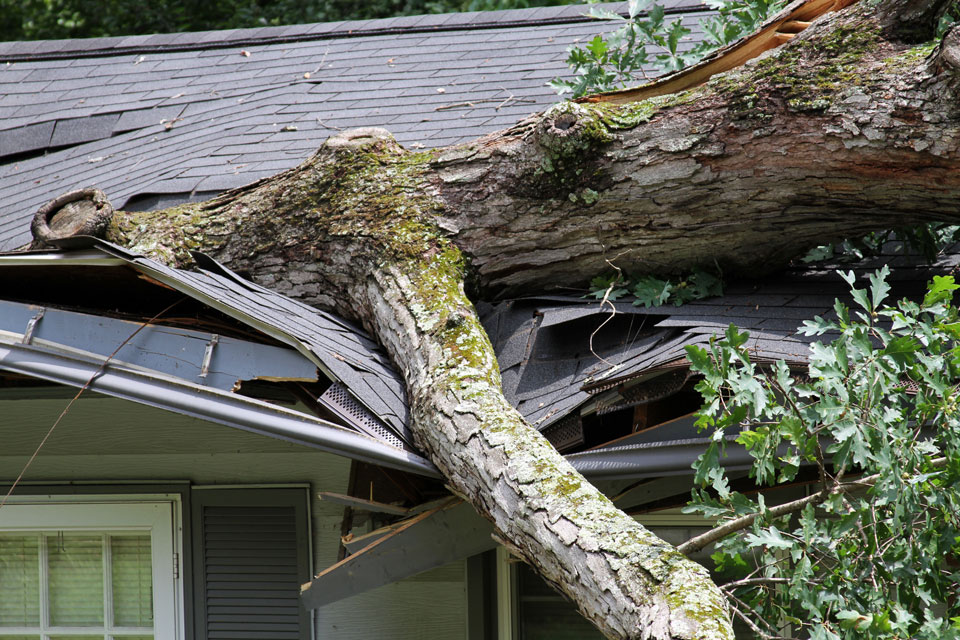Does Home Insurance Cover Roof Damage?


If your roof is unexpectedly damaged, it is a problem that should be addressed immediately not only to maintain a secure home but also to prevent further loss to the property. Roof damage that goes unnoticed or ignored can quickly lead to issues in and around your home, including water leaks, broken gutters, and even higher-than-normal utility bills.
Depending on the roofing material used, the size of the roof, and the extent of damage, the cost of roof repairs could be several thousand dollars or more. Whether your roof requires some minor patching, partial or extensive replacement or reinforcement, or a whole new roofing system, your home insurance may help you cover the expense.
If a home’s roof is suddenly damaged due to an extreme weather event, fire, or other covered peril, the Dwelling Coverage in a homeowners insurance policy typically helps cover the cost to repair the roof, or may even help cover the expense of a full roof replacement when deemed necessary.
It is important to speak with your local insurance professional to learn what your specific policy covers. They are also the best resource to explain your coverage limits for roof damage and any home insurance deductibles that may apply, including separate deductibles your policy may include for losses related to wind, hail, hurricane, or earthquake.
In general, you can expect your home insurance to cover roof repairs in these scenarios:
Home insurance also includes coverage for a homeowner’s personal belongings, so they may also get help paying to repair or replace household items that are ruined as a result of a covered roof claim.
In some cases, a home may not be livable due to the extent of the roof damage. Most homeowners policies include Loss of Use Coverage, which typically provides a reimbursement for temporary lodging and other incremental expenses incurred while the roof is being repaired.
In general, a home insurance policy does not include coverage for roof damage that has occurred gradually. For example, as a roof ages, it is constantly exposed to weather, wildlife, debris, and more that causes normal wear and tear, such as degradation of shingles and other roofing materials. Home insurance does not cover the cost of repairs related to an aging roof nor does a policy cover a whole new roof when it reaches the end of its useful life.
Other causes of roof damage that are not usually covered by home insurance include:
The safest way to keep tabs on your roof, identify issues before they become major problems, and get necessary repairs done quickly is to schedule regular inspections with a licensed, insured professional. The National Roofing Contractors Association recommends conducting a thorough roof inspection at least two times per year, once in the spring and once in the fall, as well as after a storm.
Aside from your roof, there are many other areas of your home that should be regularly inspected so you can uncover problems early and devise a plan to remedy them before they spread. Our home maintenance tips should make it easier for you to tackle this important homeowner responsibility.
To get an even better understanding of the specific coverage, exclusions, and potential loss settlement limitations in your homeowners policy, consult with your local independent insurance agent.
Click on the Find an Agent button to search for independent insurance agencies near you.
Contact the independent insurance agency you would like to work with by phone or email.
Leave it up to your agent to uncover the best coverage solutions for your valuable property.